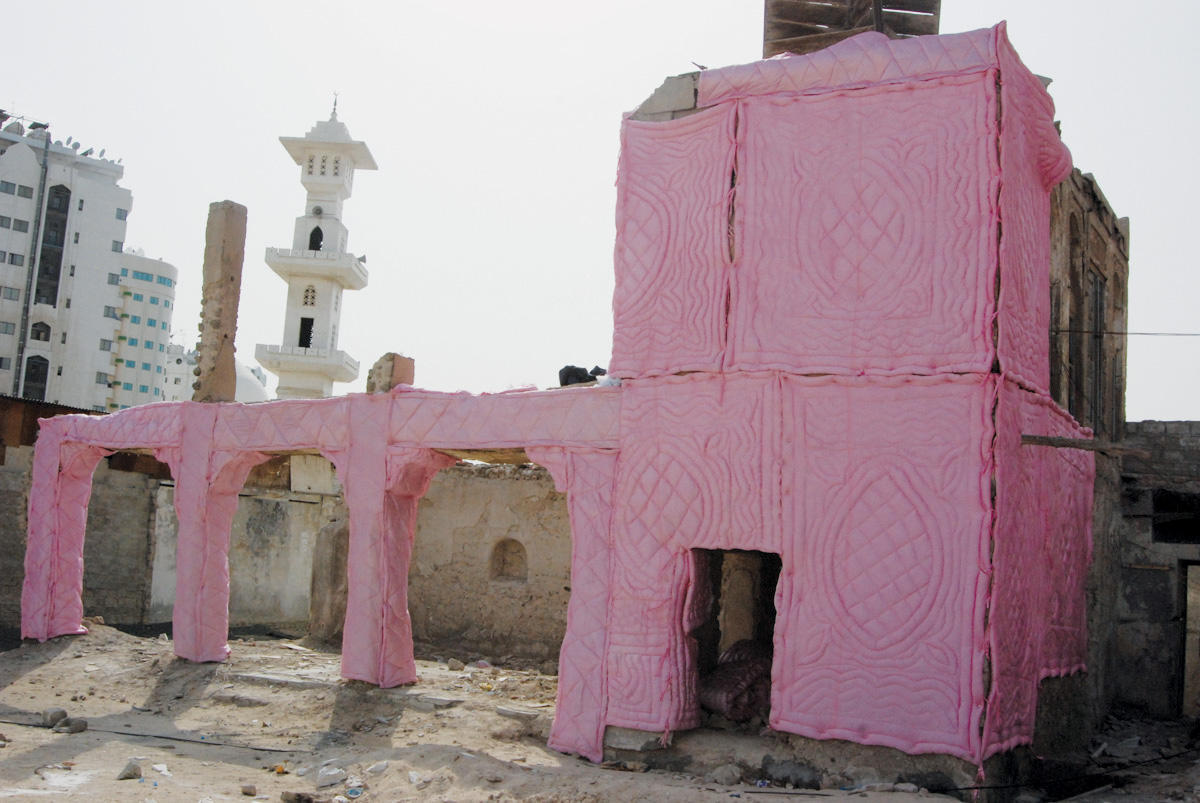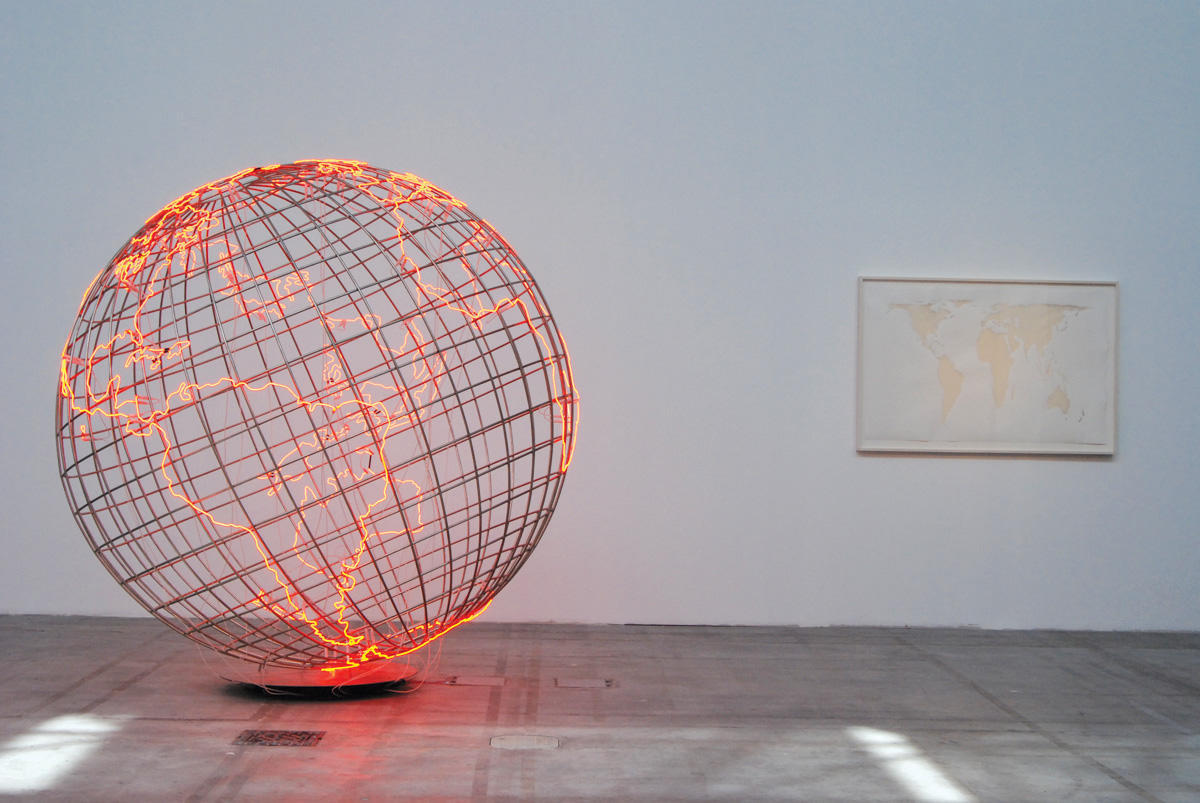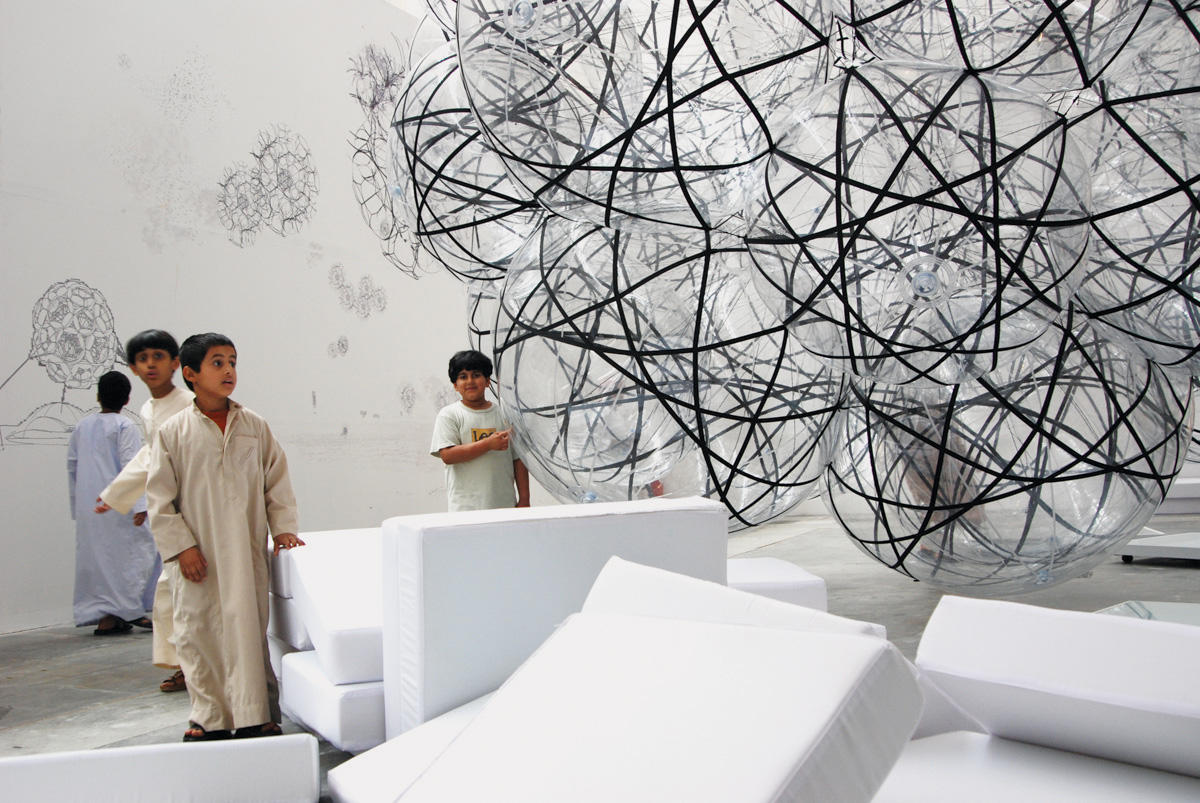
Sharjah
Sharjah Biennial 8: Still Life - Art, Ecology, and the Politics of Change
Sharjah Art Museum and various venues
April 4–June 4, 2007
The Sharjah Biennial continues to exist as a critical aporia of sorts. Much has changed in the UAE’s contemporary art scene since the event’s impressive seventh edition in 2005. A frenzied, unabashedly commercial market has emerged out of nowhere in neighboring development-mad Dubai, while Abu Dhabi’s ambitious Saadiyat Island project has embraced “art as cultural tourism” with such reckless abandon, it has ruffled feathers as far away as France (the French, of course, know absolutely nothing about building a tourist economy around art and culture). Such high-profile initiatives have drawn much criticism from an occasionally condescending Western media, which has unfairly overshadowed Sharjah’s commitment to creating both infrastructure and space for a critical contemporary art practice in the region; it appears that guilt by association has replaced relative obscurity as the biennial’s main hurdle to recognition.
The chosen themes of the current and previous editions (“belonging” was one past theme) evince self-examination and reflection about the role of the biennial as an institution deeply implicated in the problematic economic, political, cultural, and developmental processes of globalization itself. In addition, tempered by concerns about censorship, these themes have afforded opportunities to obliquely critique the biennial’s specific site. This obliqueness has encouraged curatorial creativity and artistic ingenuity and modesty, ensuring the kind of measured balance between poetics and politics that can provide for the most interesting art.
Recognizing the impossibility of an ecologically sound biennial, this edition’s organizers presented their exhibition as a platform through which issues of environment, ecology, and sustainable living could be raised and debated. Deploying its reported three-million-dollar budget to commission fifty-three new projects, the biennial encouraged an ecological rather than object-based practice, asking artists to respond specifically to and interact with Sharjah’s environment and inhabitants. A number of public projects throughout the city explored the limits of art’s own ecology by engaging local audiences outside the white boxes that are the Sharjah Art Museum and Expo Centre.

Ecology was a gutsy choice, considering the UAE economy’s reliance on fossil fuels and the unbridled pace of development in the region that has profoundly, and probably negatively, altered the landscape. Refreshingly, these issues were addressed most directly by artists from the region rather than those hailing from outside — testament to the fact that the biennial could provide a platform for critical local debates. Noor Al-Bastaki’s Steps and Paths (2005) used photographs and video of teenagers playfully balancing on oil pipelines as a metaphor for the region’s precarious reliance on this natural resource. Hassan Meer’s The Oil Camp (2006) and Huda Saeed Saif’s Some Vision (2006), both multi-channel video installations, deployed a more documentary mode to examine the deleterious effects that oil industry infrastructure and real estate developments, respectively, have had on local communities.
The theme also allowed artists to explore the long history of adaptation to and manipulation of the environment necessary for surviving the local climate, most recently manifest in the reliance on air conditioning and desalination. Maha Mustafa’s Landscape Minus 37°C (2004) — a large, frosted-over cooling unit humorously recreated the common problem faced when using an air conditioner in the extreme heat and humidity, while Gerda Steiner and Jörg Lenzlinger’s The Desalination Plant Waste Garden (2007) combined the briny waste of the desalination process with urban detritus and plastic flowers to create a wonderfully kitsch hanging garden. Marjetica Potrc and Tue Greenfort executed more direct interventions: Potrc installed a functioning solar-powered desalination device in a local school — solar power is a surprisingly underused alternative energy source in the region — while Greenfort demonstrated the impact of an infinitesimal adjustment in energy use by raising the museum’s temperature by two degrees Celsius, using the money saved on air conditioning to purchase a plot of rainforest.

The local culture’s strong tie to both the desert and the sea, two vastly different ecologies, was eloquently captured in Luca Vitone’s trio of large “monochrome” Landscapes (2006–07). Over a period of months, Vitone exposed blank canvases to the environment at three very different sites — an oil well in the desert, a TV tower by the sea, and a crane in the harbor — and let the city paint its own self-portrait. A comparable economy of form, concept, and material — a sustainable art practice, if you will — was evident in other works, such as Suchan Kinoshita’s Isofollies (2007), shiny black pods created by compacting the biennial’s waste and SOI Project’s Cloud (2007), a delicate canopy at the Expo Centre created using just sheets of paper and clips.
And what of the peculiar ecology of labor that we hear so much about? After all, a recurring preoccupation of the international human rights movement is the gulf’s problematic human rights record: seventy-eight percent of the population is expatriate, much of it comprised of exploited migrant workers with limited rights, much less any political agency. The subtlest meditation on this theme may have been Victor Arkhipov’s Naming Forms/UAE (2007), an installation of borrowed found objects — a fan, a thread stand, a mirror — presented along with the names and numbers of those who made them, all migrant laborers. These modest ad hoc possessions communicated both disenfranchisement and agency, while the accompanying contact information provided visibility and accessibility. The work was thoughtful and nuanced — a final proof that the biennial could inspire work that was both critically relevant and innovative, born of the specificity of place and yet of the world.